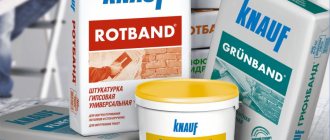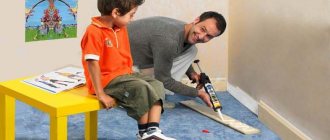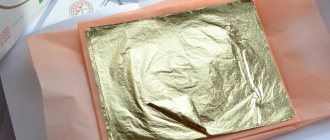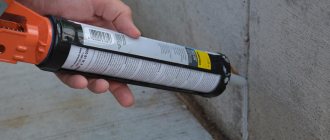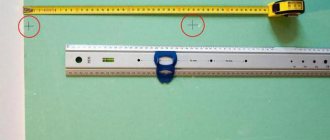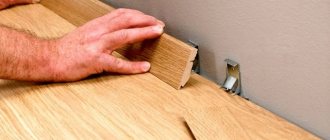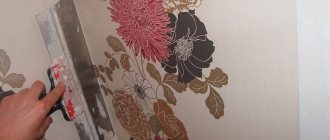Often there are various breakdowns of items used in everyday life, and the product does not always have to be thrown away; often you can return a second life to your favorite thing. To do this, it is possible to use gluing of rubber parts, and the product should help to obtain a strong seam, which, if possible, should be invisible. Among the many adhesive solutions on the market, rubber adhesive stands out. But to get the desired result, you need to choose the right type. More details about the criteria for choosing rubber adhesive and operating rules will be discussed below.
How to glue rubber to rubber tightly?
Let's consider options for reliable and high-quality adhesives for rubber
Rubber glue 88
The so-called 88 glue is an excellent option for gluing rubber. It contains phenol-formaldehyde resin and a rubber mixture. The resin is part of ethyl acetate with nefras, and this compound gives the very water resistance we need. And the setting time will suit our expectations.
The important characteristics of 88 glue are the following parameters common to all its versions:
- 11 kgf/cm2 – tensile strength characteristic;
- consumption in the case of gluing rubber with an area of 1 m2 - 300 grams;
- the glued seam will withstand temperatures from -40 degrees. up to +70 degrees. Celsius.
Glue 88 gives good performance when gluing parts made of foam rubber, metal, synthetics and other materials. Would you like to tightly connect leather products or parts made of glass or concrete? Feel free to use this rubber cement and you can't go wrong.
U425-3 and 4NB-UV
If you need subsequent rubber vulcanization, pay attention to U425-3. Its production is based on rubber, ethyl acetate and nefras
4NB-UV is also used for rubber that requires vulcanization. This one-component adhesive guarantees a waterproof and oil-resistant connection. Withstands temperatures from -40 degrees. up to +60 degrees °C. The eyes of those involved in shoe production or repair, those who produce agricultural machinery, rubberized fabrics or materials made from rubber - synthetic or natural - are turned to him.
Rubber adhesive 4508
The glue, like all the previous ones, has a rubber based composition. What distinguishes it from others is its increased stickiness and ultra-water resistance. The seams are elastic; it is readily used in the production of textile and rubber clothing, for example, special suits made of rubberized fabrics. It is also indispensable in the production of leather goods. Suitable for repairing boats and sewing suits for fishermen.
Its composition is formed by two components, so preliminary preparation is provided. You just need to work with it away from open fire. Its cost for 200 ml is about 160 rubles.
Let's talk about glue brand A
It is also rubber cement. In everyday life it is often preferred because it is made from natural rubber. If you have to glue leather materials, cardboard products or paper, the same car or bicycle tube, and you have a tube of grade A glue on your shelf, you are saved!
There is no need to prepare it first. Just open the tube, apply glue - it dries very quickly and meets all the necessary requirements for a long time. And it costs only 135 rubles per kilogram container.
Our answer to fishermen is “Radical”
They loved the glue for its elasticity and strength. And we are sure that it can handle stress or high pressure perfectly. Low temperatures are not a problem for him, just like salty sea water. Problems with kayak or boat repair? “Radical is a wonderful helper. For 50 ml you will have to pay 60 rubles.
Gummi glue
However, it will also easily seal boats and kayaks. The natural rubber in its composition will give a confident answer to the question of how to glue rubber to rubber. It also guarantees a waterproof connection. Are you engaged in the production of leather goods? We recommend choosing this glue. And the price is the same as the previous sample - the same 60 rubles for the same volume - 50 ml.
Who is not familiar with Moment glue?
Something tells me that everyone is familiar with him. And they will boldly call it one of the best when gluing rubber. Its fame is fully justified, because it is able to provide strength to any connection.
Do you need to glue foam or hard rubber? – “Moment” will cope with the task “instantly”. And now the rubber is firmly and firmly connected to rough and hard PVC, concrete slabs or wooden surfaces. And if metal is subject to it, then what can we say about cardboard?
In all cases this connection will give:
- high level strength;
- stable reliable connection;
- elastic design;
- protection from moisture;
- long service life.
Sealant for gluing glass - the best option
Glue for a car windshield should not just “fill up” a crack, but have excellent characteristics
density, elasticity and shock absorption (the latter will help dampen vibrations and maintain the integrity of the repaired surface).
The basis of high-quality and reliable glue is polyurethane. This composition is used for gluing windshields because it tolerates sudden temperature changes and is not afraid of moisture. The only disadvantage of the glue is the fear of ultraviolet radiation, but this problem can be easily solved by applying a primer (a black protective strip that covers the glue from direct sunlight).
The quality of windshield gluing directly depends on the preparation of the working surface (it is necessary to remove the old adhesive layer, remove possible corrosion, dirt, and get rid of dampness).
Pay special attention! It will not be possible to seal the windshield with polyurethane-based glue if the surface is stained with bitumen - the composition is poorly compatible with this material.
Before answering the question of how to glue a windshield, you should point out the fact that reliability depends on the duration of gluing. The longer the process takes, the better the repair will be. But again, during long-term gluing, the windshield should be in a static position, in a room with moderate temperature and humidity levels.
You can find out more details in the video:
If such a room simply does not exist, the glass is sealed with quick-hardening glue. In the field of auto glass repair specialists, the following brands are in greatest demand: Dinitrol, BetaSeal, Wellvis, Henkel, etc.
Types of cold welding Mastix
The Russian manufacturer Mastix offers different types of cold welding, which are produced under the brand of the same name:
- "Gas Tank Sealant" It is used for repairing gas tanks of trucks, agricultural machines, and special equipment. Tanks can be plastic or metal. Work can be carried out on oiled and water-filled surfaces.
- "Radiator sealant." A complete analogue of the previous mixture, but is used only for repairing radiators.
- "Glue for aluminum." Officially, it should only be used for bonding aluminum parts and structural elements. In practice, it is actively and successfully used for joining wooden, plastic, ceramic, and metal products in various combinations.
- "Glue for batteries and pipes." The mixture can be used to work with cold and hot pipelines, sewer systems, and batteries. Suitable for use in industrial and domestic areas.
- "Glue for bronze." Used to connect bronze products, as well as parts made of other types of non-ferrous and ferrous metals.
- "Glue on oily surfaces." If it is impossible to clean the surfaces to be joined from traces of oil, it is recommended to use this cold welding Mastix. When working with oiled surfaces, it makes a connection 50-70% better than traditional adhesives.
- "Glue for metal." Contains metal filler. Used for all types of metals. Has a wide operating temperature range.
- "Glue for plumbing." A specialized adhesive mixture designed for use in the repair of plumbing equipment, as well as decorative products and finishing materials made of ceramics, porcelain, plastic, and wood.
- "Fast Steel" This type of Mastix cold welding ensures the fastest possible gluing of parts.
- "Heat-resistant glue." It is a traditional adhesive mixture, but it contains special components that allow its permissible operating temperature to be increased to 250° C.
- "Universal glue." An excellent option for household use, for joining parts and surfaces made of various materials.
- "BLITZ universal glue." Similar to the previous composition, but has a higher hardening speed.
How to glue rubber onto ceramics or glass?
Conventional rubber-type glue is unable to firmly adhere rubber to glass or ceramic surfaces. For these purposes, modern adhesives will be required, the creation of which used innovative technologies. One such material is Kernil quick-drying glue. It is available in 15 ml tubes, which comes with a powder filler. Kernil glues rubber to glass in 30 seconds, but the seam reaches its final strength after 8 hours.
Instructions for use:
If you do not have a suitable adhesive or if it is impossible to use it, you can resort to an alternative gluing method using 3M double-sided adhesive tape. One or several fragments of the required size are cut from the skein and with their help the rubber is fixed to the glass or ceramic surface.
What glues rubber to fabric?
For gluing a rubber part and fabric or leather, ordinary rubber glue based on artificial or natural rubber, for example, “Moment 88” or 88-CA, is suitable. Gluing is carried out using standard technology: the surfaces are lubricated with glue, allowed to air dry for 15 to 20 minutes, then a second adhesive layer is applied and after 5 minutes the rubber is pressed tightly to the textile.
For better adhesion, it is recommended to press for about 5 minutes. Unlike other materials, when gluing fabric to rubber, a daily exposure is not required. The same can be said about skin. The glued product can be used after 30 minutes.
Additional details
Door seals determine the quality of sound insulation of a car interior. You can seal the cracks with your own hands, which will improve ride comfort. The driver installs additional kits at his own discretion. The cost of parts and labor for their installation is low.
The simplest option for additional compaction is using Flex. A special tube can be purchased at an auto or air conditioning supply store. How to glue rubber seal to a car door? On glue or tape (double-sided). The fixation is reliable, but you will first need to degrease the surface.
One tube runs from the top, following from the bottom of the windshield and reaching the back door. The flex should go over the back door, then along the contour in a downward direction. Simply fixing it with glue is not the best option; the additional elastic band will quickly come off.
The first door closures are usually tight, but after a day Flex takes the required shape.
The effect after additional compaction is noticeable immediately. The cabin becomes comfortable, the amount of noise decreases, the wind stops blowing in the car, there is no dust and its characteristic aroma. The material is cheap, self-installation takes 30-60 minutes. If you cannot repair the car yourself, contact a service center.
Glue for gluing rubber and metal and plastic - the best waterproof
There is a huge variety of adhesives. All of them are classified according to the ingredients from which they are made, according to the materials for which they are intended.
glue for gluing rubber, plastic, metal
If you need to choose an adhesive, for example, for metal or plastic, or rubber, then you should not forget some nuances that are always taken into account during the purchase.
Rubber adhesive: learning to choose the right one
There are a huge number of different adhesives on the modern market that are suitable for different materials. For example, glue for gluing rubber is suitable for metal, plastic, and even leather. The main thing is that such a characteristic is indicated on the packaging. If you need glue for rubber, for example, 88-CA, this must be indicated on the tube. Do not agree to buy another option if what you need is simply not available, because in this case there is a high probability that the result of the work done will not satisfy you.
glue for gluing rubber, plastic, metal
Adhesive for metal and rubber, for example, must have the following characteristics:
- high level of strength;
- it should not peel off after gluing is completed;
- it must be heat-resistant, that is, it must not change its resistance when exposed to high or low temperatures.
Many people are well aware of the so-called “liquid rubber”, which is capable of not just perfectly gluing surfaces. One gets the feeling that he becomes part of them, making them completely inseparable.
If you need to treat, for example, car tires with glue, then on the packaging you should definitely look for the inscription: glue for rubber is waterproof. After all, road surfaces are often wet, which should not in any way affect the condition of your wheels.
For example, 88-CA gives excellent performance. It does not cause corrosion of steel and aluminum alloys. Surfaces glued with 88-CA can be used even under water (including salt water).
Whether there is a single and best glue for rubber is unknown, because for each individual case you can choose your ideal option, which will help you perform even the most complex types of gluing work. Many people recommend Moment glue, which is so widespread on the modern market. It is really competitive, but completely unsuitable for many types of rubber bonding, for which you will need to purchase professional adhesives.
Universal adhesive for rubber and plastic: is there such a thing?
As already mentioned, on the market you can find many universal products that are suitable for gluing different types of surfaces. It is worth noting that an adhesive that is suitable for rubber and plastic, for example, must also have hermetic properties. That is, he must not just attach the surfaces to each other, but make them a single whole.
Glue for silicone rubber is generally a separate type of glue, which must be durable and not peel off, but at the same time not turn the glued surfaces into a hard surface, because silicone rubber is distinguished precisely by its softness and pliability. On the packaging of such adhesives you can see the inscription: adhesive for elastic materials.
Metal adhesive - quality product
Fifty years ago, probably, no one would have believed that modern space technology would be created not only by riveting metal, but also by gluing it. For a long time, people could not invent an adhesive that would be suitable for metals, because the properties of this material are quite finicky and connecting it reliably, hermetically, and even for a long time with each other was problematic.
But today, each of us will be able to purchase, if necessary, a tube of glue, which in just one moment can turn two pieces of metal into a single monolith. Glue for metal must also be heat-resistant and water-resistant - these characteristics cannot be avoided today. If you have serious work ahead of you and need to glue metals together, you should not expect high quality indicators from cheap adhesives.
What is the purpose of the window seal in every car?
A modern car has many useful devices that play an extremely important role in the proper operation of passenger vehicles.
Among them, such an inconspicuous, but extremely necessary element of each car door, the seal, plays a very important role in maintaining a special comfortable microclimate inside the car.
Other positive properties of glass sealants include:
Thus, a simple rubber tape for the glass doors of any car has many useful qualities that every car owner needs. But the rubber seal may collapse over time, or its structure may be affected by too much frost or a sudden change in temperature outside the car window.
That is why you should always have spare velvet cloths on hand, which can easily be replaced to replace old ones that have worn out their usefulness. If this is not done, the seal will begin to scratch the glass, and car owners will immediately feel the importance of the presence of a rubber sealing strip in each car door window. Glass seals cost very little, and replacing them with your own hands is as easy as shelling pears; you don’t need to have the necessary experience.
Important! It is strongly recommended to change the seal not on one door, but on all of them at once, so that uneven aging of the door glass seal does not cause problems during vehicle operation.
Glue selection
Which glue is better to use, what are the selection criteria? If you need to firmly glue metal to rubber, you should look for a product with enhanced adhesion that gives a reliable seam, while being elastic
It is also important to consider a number of factors:
- humidity and temperature in the rooms where gluing will be done and then the product will be used;
- load on the bonded surfaces;
- the need for high aesthetic properties of the finished product;
- the degree of chemical aggressiveness of the glue, taking into account the type of metal.
When purchasing, it is important to clarify in the instructions or on the packaging that the manufacturer guarantees the suitability of the composition for rubber and metals and alloys. Universal means are not always suitable for such a complex joint, as well as for joining other dissimilar materials
After drying, the seam should not peel off from the base, must be heat-resistant and not change strength when exposed to low temperatures.
For cars, it is often recommended to buy products such as “liquid rubber”. They can perfectly glue rubber surfaces, as if becoming part of them, and therefore are outwardly invisible. The water resistance of the glue is another important point when choosing; this property is required by almost every user, especially the car owner. If necessary, you can buy glue that will allow you to use the parts even under water.
When joining rubber and metal, it is important to prevent corrosion, therefore high-quality glue always has a mark on the safety of the composition. A separate type of adhesive is considered to be products for silicone rubber, which is soft and pliable.
On the tube of such glue there is an inscription “for elastic materials”.
The best brands for gluing
How to glue metal or other complex materials to rubber? For this purpose, you should purchase only proven formulations:
- 88CA. Resin glue based on organic solvents, contains phenol-formaldehyde resin, nefras, ethyl acetate. It fits perfectly both on painted materials and on concrete, glass, wood, and is suitable for dissimilar substrates. The composition is waterproof, does not peel off from moisture, and does not produce toxic fumes after drying. Does not interact with metal and therefore does not provoke corrosion.
- U425-3. The properties are similar to the product described above, since it has a similar composition. Used for gluing followed by vulcanization if required.
- 4NB-UV. The glue is oil-resistant, waterproof, but can withstand heating only up to +60 degrees, while it is frost-resistant - it is not damaged by freezing down to -40 degrees. They can be used to glue rubber, rubber-fabric materials, and metal. This composition forms a very elastic seam and has residual stickiness. It is ideal for repairing various rubber products, boats, and chemical protection suits.
- Radical. This glue can even serve in sea water; it is not destroyed by the action of salts and alkalis, which is why it is popular among fishermen (used for repairing any boats).
- The moment is rubber. Suitable for hard and foam rubber, provides high strength, resistance to water and oils, and elasticity of the adhesive seam.
Also, for complex surfaces, adhesives such as Super-NN, Rogneda, Loctite Super Fast are often used. Some users make their own rubber adhesives to save money. To do this, soft rubber is crushed and filled with aviation gasoline to completely cover the mass. After 2-3 days, the liquid is filtered. After standing in a warm place for another couple of days, the glue will be ready.
Stamps
The following brands of glue can be used to tightly glue rubber to rubber:
- U425-3 is made on the basis of rubber with the addition of nefras and ethyl acetate, used for gluing with subsequent vulcanization of the material.
- 4NB-UV is a one-component, oil- and water-resistant adhesive, operating temperature range is from –40 to +60° C. It can be used for rubber vulcanization at +180° C. It is used for connecting surfaces of nitrile, natural, chloroprene rubber, and rubber-fabric materials , shoe repair and manufacturing, agricultural machinery production.
- Rubber adhesive 4508 has increased stickiness and water resistance, and forms an elastic seam. It is used in the production of rubber products, rubberized fabrics, and suits intended for special protection. The best composition for repairing PVC boats, fishing suits and leather goods.
Rubber glue 4508
You can make a good tool for gluing various rubber products with your own hands:
- Grind the soft rubber into small pieces and fill it with aviation (clean) gasoline.
- Leave the mixture to infuse for several days, after which filter the resulting mass.
- Let the mixture sit for a few more days in a warm place.
Rubber and concrete: what will connect them?
The need to combine rubber with concrete arises in the process of finishing work, for example, when applying floor coverings in sports halls. Special compounds are used to fix rubber tiles or tracks.
Stages of work:
- leveling the concrete surface using liquid screed;
- coating the concrete with a special primer to prevent dust formation;
- stirring the adhesive mixture with a construction mixer to a paste-like consistency;
- applying glue to concrete and leveling it with a spatula;
- fixing rubber to concrete;
- placing a press using improvised means on the seam area.
How to replace rubber car door window seals with your own hands?
In fact, this is not difficult to do, and even a beginner can complete this operation in an hour. You just need to remove the inner door cover with a screwdriver and use it to pull the rubber band of the velvet out of the door. This process is not complicated and will take little time.
Likewise, simply inserting a new sealing strip into the slot is extremely easy. Everything is done using a regular screwdriver with your own hands, without nerves and haste. You must not allow damage to the rubber sealing tape of the car door glass, as this will cause problems.
Source
Properties and characteristics
The main difference between rubber glue is the formation of an elastic seam that maintains the plasticity of the structure. In its solid state, the adhesive is made from natural or synthetic rubber and has properties similar to rubber.
The recipe used by manufacturers is unique, and the composition depends on the operational and technical characteristics of the finished product:
Waterproof adhesive for rubber, periodically in contact with water - repair of shoes, boats, leather goods. High-strength rubber adhesive, resistant to aggressive operating conditions, is used in construction and car repair. The quick-drying composition reduces the curing process of adhesive joints. It is not recommended for large-scale work, since there is no time for adjustments. Elastic rubber adhesive is used for gluing soft materials. After drying, the structure of the seam remains plastic, does not “tan”, and therefore does not crack during operation. The oil-resistant composition is used when working with petrol- and oil-resistant materials.
An important property of adhesives BR-10, KR-5-18 is that they do not dissolve in the aggressive environment of fuels and lubricants and petroleum products.
Some manufacturers produce universal rubber adhesive that combines several properties, for example, water resistance, elasticity and oil resistance. Before purchasing a product, you need to study its technical characteristics and make sure that the composition is suitable for solving a specific task and can withstand further operating conditions.
The process of simple gluing using the example of a silicone toy at home
The entire gluing process will take place in several steps, but first of all, it is important to prepare the product so that the seam is strong enough.
- First, take two pieces of torn silicone and rinse them thoroughly. To do this, fill a small container with water and rinse the fragments thoroughly, removing any dirt, if any.
- Next, drain the water and prepare a soap solution and rinse the silicone in it again. Now leave the item to dry completely on a napkin. It is important that there are no lint left on the product.
- After complete drying, take a painting or stationery knife and a lighter. It is desirable that the blade be thin enough. Warm it thoroughly over an open fire. Then lean the two parts of the silicone toy against both sides.
- The two fragments will be securely fastened to each other. The toy will turn out to be one whole.
Silicone toy repaired by heating Source vova.com.tw
This method has two main disadvantages: firstly, it is only suitable for gluing miniature products, and secondly, the finished seam will not be very smooth and unesthetic.
Instructions for using rubber glue
The work can be carried out using two methods: hot and cold. The second option consists of standard actions that are performed when using any adhesives; ease of use is burdened by a long drying time - 2-3 days. The first involves exposing the surface to high temperatures, while drying occurs much faster and takes 3 hours.
If the shelf life is expired, then it is better to throw away such glue; it will not be possible to glue surfaces with it. It is also better to adhere to the following recommendations when gluing:
- Temperature readings during operation should not be lower than +5 degrees;
- The presence of rubber makes the solution flammable, so there should be no sources of fire nearby;
- Strictly follow the manufacturer’s instructions, without violating the terms of gluing and waiting for drying;
- The hot method is more convenient to perform using a hair dryer;
- When exposed to temperature, toxic substances are released, the master must wear a respirator, and good ventilation is created in the room.
The products themselves are prepared; they must be clean and grease-free. Smooth surfaces are sanded to obtain better adhesion. Glue can only be applied to a dry surface.
If the work is carried out with a thick composition, then a small spatula is chosen for application; for liquid types, a brush is better. The optimal layer thickness is 2 millimeters. After applying the 2nd, press the parts together end-to-end, using a press if necessary. There are also options for heating the glue, drying it in air, all these actions depend on the type of glue, so you should follow the manufacturer’s instructions.
If the work is carried out with a thick composition, then a small spatula is chosen for application; for liquid types, a brush is better.
The article described how to glue rubber to rubber and other types of materials. The process can be performed using two methods – cold and hot. Modern adhesives make it possible to obtain a super strong adhesion that will last for many years and will withstand the negative effects of environmental factors. To get a high-quality result, you need to study the manufacturer’s instructions, which indicate the rules of operation and the purpose of the composition.
Similar chapters from other books
HOW TO USE CREAM, MASK AND OTHER COSMETIC PRODUCTS CORRECTLY
HOW TO USE CREAM, MASK AND OTHER COSMETIC PRODUCTS CORRECTLY To get the maximum effect from the cream, you must follow certain rules for its application. Any cream is applied after cleansing the skin. It’s even better if it’s not just cleansing, but
Safety precautions when working with paints and varnishes
Safety precautions when working with paints and varnishes When carrying out painting work, the following types of risks and dangers are possible: the danger of poisoning and the danger of fire or explosion. Fire hazards can be eliminated or reduced by following
GLINDING WOOD
GLUEING WOOD To repair furniture in various carpentry works, the following adhesives are used: “PVA”, “PVA-A”, “PVA-M”, as well as “Oak”, “Synthetic carpentry”, “Casein glue” (in powder) and “Glue bone" (in tiles). Durable and waterproof seams are provided by “Casein glue”,
BONDING METALS WITH OTHER MATERIALS
BONDING METALS WITH OTHER MATERIALS Probably not every car enthusiast knows that you can, for example, repair cracks in the head and cylinder of motorcycle and car engines, glue a fitting, glue a bracket, or repair a crack in a tank. But here too
GLASS BONDING WITH OTHER MATERIALS
GLUING GLASS WITH OTHER MATERIALS When gluing glass and gluing various materials to it, the most durable and colorless seams that are resistant to cold water are “Mars”, “Patex”, “Unicum”, “PVA”, “Super Cement” and “BF-” are also suitable 2".Before gluing
BONDING LEATHER WITH OTHER MATERIALS
BONDING LEATHER WITH OTHER MATERIALS For gluing leather to leather, leather to fabric and leather to leather substitutes, the following adhesives are most suitable: “Mars”, “MC-1”, “AGO”, “EGA”, “Rapid”, “88N”, “ KR-1", "PVC", "PVA", "Patex" and "Unicum". Most often, the skin has to be glued together in those
GLINDING WOOD
GLUING OF WOOD Bone, hide and casein glue are used for gluing parts. Bone and hide glue is produced in the form of tiles or cereals, as well as in liquid form. It is consumed only hot, so it is first steamed in a saucepan consisting of
4.8. Coatings of concrete floors with reinforcement of the top layer with polymer materials
4.8. Coatings of concrete floors with strengthening of the top layer with polymer materials To strengthen the top layers of concrete floors, in addition to dry toppings, liquid toppings are also used. Floors reinforced with dry toppings do not have high chemical resistance and cannot withstand
4.9. Coatings of concrete floors with reinforcement of the top layer with polymer-cement materials
4.9. Coatings of concrete floors with strengthening of the top layer with polymer-cement materials Some features of technological processes and operating conditions of floors in meat, fish, dairy, canning, and bakery processing plants limit
I. BONDING
I. GLINDING In amateur radio practice, there often arises the need to glue a wide variety of objects: paper, cardboard, leather, fabric, metal, ceramics, wood, plastic, glass, etc. Wood glue and casein glue are most suitable for gluing, but
Gluing chairs
1.19.3. Bonding and veneering
Gluing and sticking
Gluing and gluing Gluing is the joining of wooden parts using glue (Fig. 19). Wood glue should be transparent or at least light, so that it does not highlight the gluing area, does not stain the wood, and excess can be easily removed
Wood gluing
6. Wood gluing Basic requirements for the gluing process. In carpentry, the ability of wood to bond well with various adhesives is widely used. At the same time, the strength of the parts increases, warping decreases, and the wood receives a margin of safety
Fast drying tile adhesive
The hardening time of the tile solution depends on the composition of the components introduced into the base. The most common mixtures are based on Portland cement and gypsum. Additional components are introduced into cement mixtures, which accelerate the hardening of the solution. If the main component is gypsum, then additives are introduced which, on the contrary, reduce the setting time of the solution, since pure gypsum hardens after 15 minutes.
There are no uniform standards for the hardening time of quick-drying tile adhesive, but according to reviews from craftsmen, the average time given for leveling and straightening the geometry of tile laying is 12 - 14 minutes. After which the tiles are left for 3-4 hours to dry completely. Then you can grout the joints of the wall tiles, and after 18 - 24 hours, the floor tiles.
One of the popular cement-based mixtures is “Tile Adhesive”. Russian manufacturers. Polymer additives in Portland cement can speed up the cement hardening process by 3-4 times, depending on the amount of the mixture:
- the solidification time of the finished mixture in the container is 30-40 minutes, depending on the volume, while mixing with a mixer is done every 10 minutes;
- the hardening time of the laid mortar is 10-12 minutes, during this time it is necessary to adjust the position and geometry; the first stage of hardening during which grouting can take two to three hours;
- complete hardening time is 18 - 24 hours.
If this mixture is used for floor tiles, confident walking is allowed after 48 hours.
Additional factors to consider when using quick drying tile adhesive to determine curing time:
- pre-treatment of the surface on which the solution will be applied. According to the instructions for use, it is necessary to pre-treat the surface by applying a primer to the surface, which will smooth out all unevenness and prepare the surface;
- The drying speed is also influenced by the technique of applying the solution - if it is applied with a wave-shaped notched trowel, the hardening time will decrease due to the presence of air gaps in the solution under the tile;
- The thickness of the mortar layer must be taken into account (maximum recommended 20 mm). If, for technical reasons, a thicker layer is applied, then it is necessary to install special intermediate rigid spacers.
How to glue acrylic, wood, rubber?
Gluing is a reliable and effective method of strong, durable connection of materials to each other. Adhesives have a high degree of adhesion (adhesion to the surface) and, when hardened, turn into a connecting seam between the two elements to which they are applied. Connecting materials with glue provides:
uniform adhesion between surfaces over the entire plane, as opposed to connecting parts using hardware;
aesthetic appearance of products, due to the absence of technological holes and other signs of fastening on their surface;
no gaps between materials.
The general rule for gluing any parts is to thoroughly pre-clean the bonding areas from dust, paint residues or previous gluing, grease stains, etc. For this, a soap solution, degreasers and abrasive tools (file, sandpaper, etc.) are used, which not only remove all unnecessary inclusions, but also give the surface the roughness necessary for better adhesion.
Another prerequisite is strict adherence to the gluing instructions. Otherwise, the result will not meet the expectations and guarantees stated by the manufacturer.
How to achieve maximum effect when gluing
In order for the plastic to adhere well, you need to carry out the procedure sequentially:
- we determine the markings of the plastic and select the appropriate glue;
- clean the surface of the plastic with acetone or alcohol;
- when gluing from the inside, clean the surface with sandpaper;
- After fastening, wait as long as required according to the instructions.
If you are unable to determine the type of plastic, then drop some glue onto the desired surface and watch the reaction. If the plastic has not dissolved and the glue is firmly attached, then the substance matches the material.
Determining the type of plastic
To firmly glue plastic, you need to know its type, type, name. With the general division of plastics into thermoplastics and thermosets, the industry produces hundreds of types of plastic, among which the most commonly used in everyday life are:
- vinyl, polyvinyl chloride;
- polycarbonate;
- polyethylene;
- polyamides (nylon, nylon);
- plexiglass (polyacrylate);
- polyurethane.
Most of these plastics belong to the group of thermoplastics. For gluing thermoplastic plastic, it is better to use multi-component adhesives with catalysts. Epoxy adhesive is better suited for gluing thermoset plastics (thermosets).
Plastic markings for choosing adhesive
Manufacturers of adhesives, in order to increase sales and make it easier to choose an adhesive, do not use the chemical names of plastics on their labels. Most often, on the inside of the plastic part, in the instructions for the glue, you can find such plastic markings in Latin letters.
| Type of plastic | Marking |
| Polypropylene | PP |
| Polycarbonate | PC |
| Polyethylene | P.E. |
| Polyvinyl chloride | PVC |
| Polyurethane | PUR |
| Acrylonitrile (automotive) | ABS |
| Polyamides | PA 66 |
| Polyacrylate | PMMA |
Labeling plastic is not very important for household work. Symbols acquire decisive importance in automobile repairs. The markings on the inside of the plastic bumper determine the auto repair technology - sticking patches or welding with plastic electrodes.
Features of repairing silicone baits
There is nothing complicated in restoring silicone baits. You can glue partial or complete tears using a special glue that is odorless. But deep injuries or punctures are healed using open fire: lighters or candles.
The repair process is similar to that described above using the example of a toy. Also, with the help of an open fire, you can completely melt a damaged fishing product, and if you have a special mold, cast a completely new piece.
